Audi has decided to renovate the second generation of the Q7, reinforcing the aesthetics, comfort, and technology of the SUV that will hit the market from the end of the first quarter.
Aesthetically, the renewed Q7 stands out for its new Singleframe grille, which has been redesigned and features a hexagonal pattern that immediately conveys a greater presence of the German SUV.
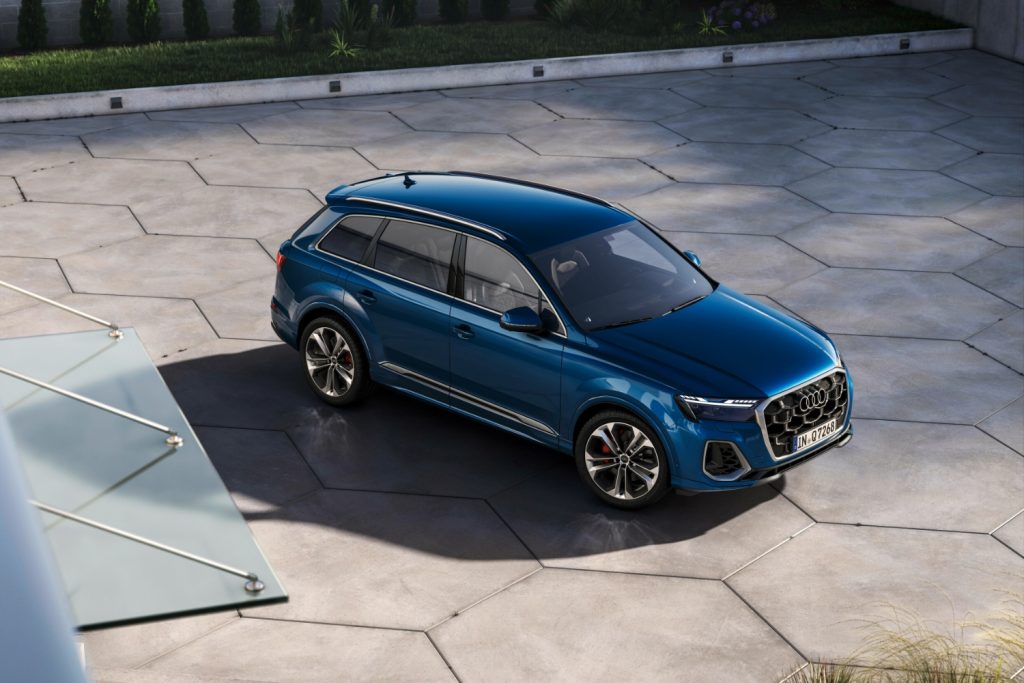
In addition, the front section is also marked by the air intakes, which now appear vertically, as well as the new lighting signature marked by LED headlights, which can optionally receive HD Matrix technology and the possibility of customization for the daytime running lights, with four different signatures. Another novelty is at the rear, where the renewed Q7 is equipped with OLED taillights.
Audi has also revealed that the Q7 SUV now offers three new body colors: Ascari Blue, Sakhir Gold, and Chili Red, in addition to five new options of 20” to 22” wheels.
Depending on the level of finish, specific details are also available, such as more elements painted in the body color or larger air intakes.


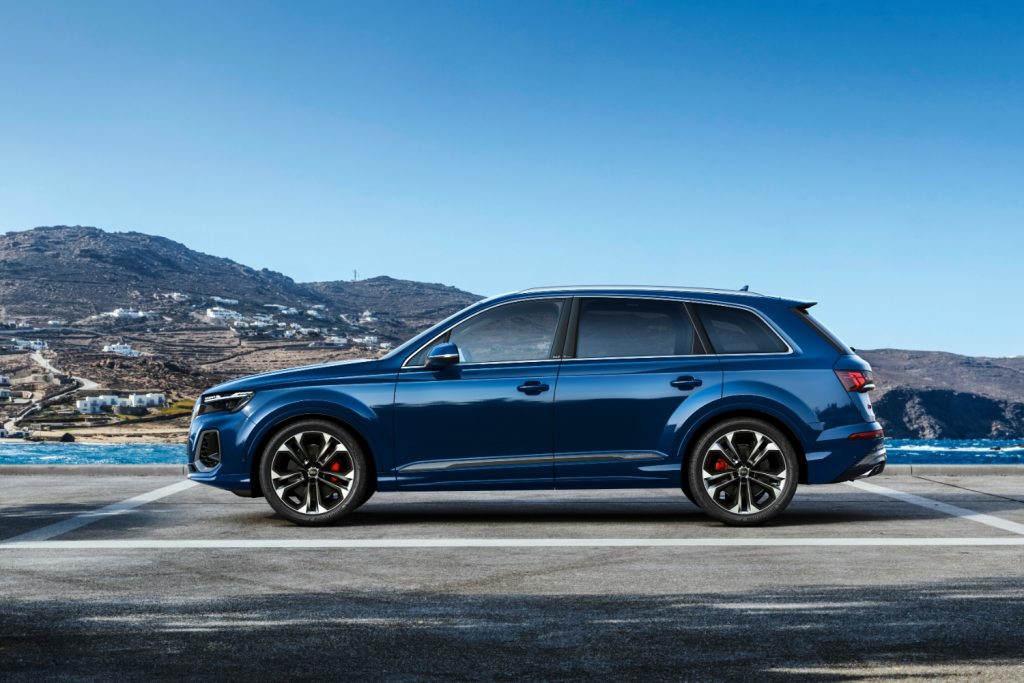
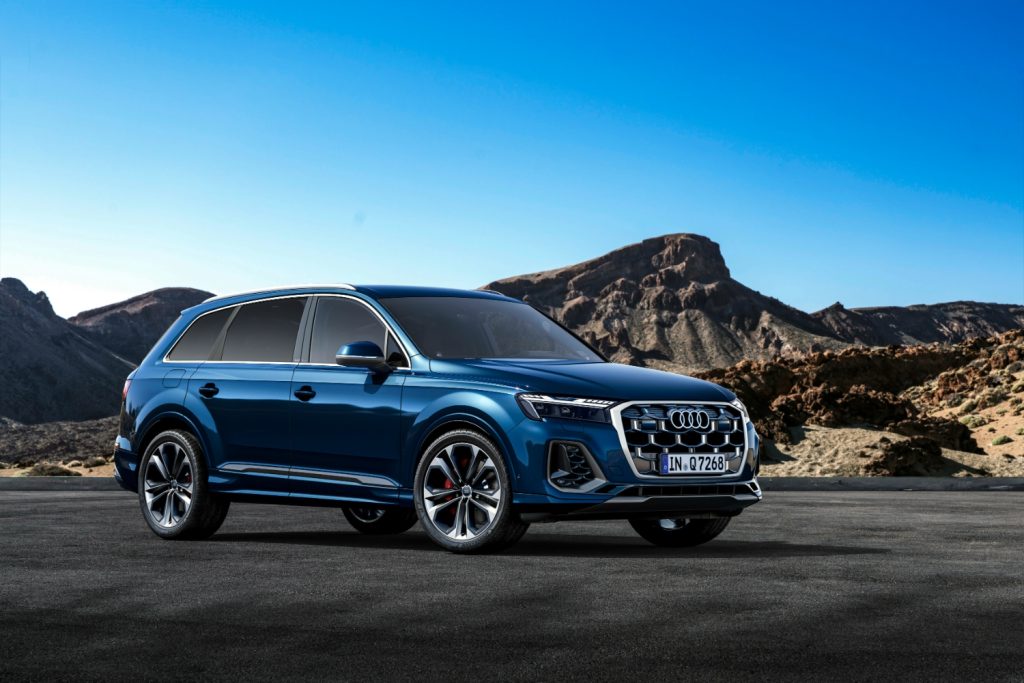
Available in five or seven-seat configurations, the renewed Audi Q7 maintains the interior of its predecessor, with two screens in the center, the upper one for the infotainment system and the lower one for the climate control system, driving modes, among other functions.
However, the infotainment system now features the updated software (MIB 3), which allows access to Spotify and Amazon Music, along with new graphics and the possibility of receiving remote updates. In addition, the Virtual Cockpit has also been updated and now features a lane departure warning system.
As standard, the interior of the renewed Q7 features contrasting gray leather upholstery, with three new available finishes: gold, blue, and red.
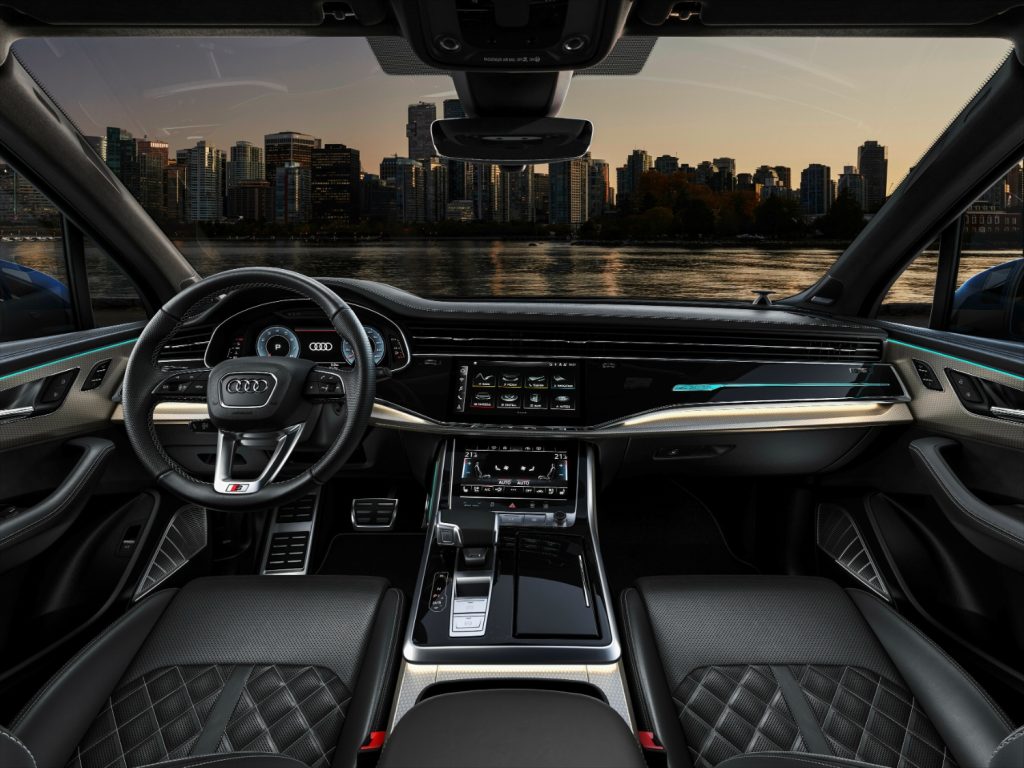
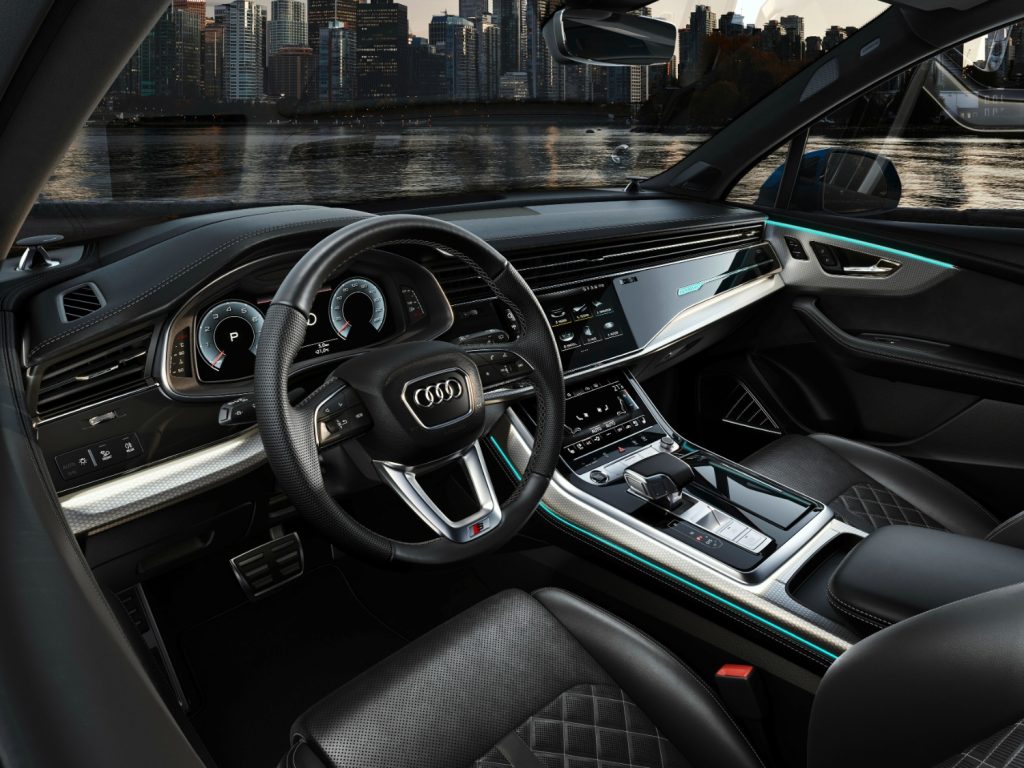


Audi has kept almost everything the same in terms of mechanics, with the range featuring the 3.0-liter turbocharged diesel V6 engine with two power levels: 231 hp and 500 Nm (45 TDI) or 286 hp and 600 Nm (50 TDI), which allow the German SUV to accelerate from 0 to 100 km/h in 7.1 and 6.1 seconds, respectively.
On the gasoline options, there is a 3.0-liter V6 engine with 340 hp and 500 Nm of maximum torque, which allows accelerating from 0 to 100 km/h in 5.6 seconds. All engines are paired with an eight-speed automatic transmission with torque converter, quattro permanent all-wheel drive, and a 48-volt mild hybrid system.
The top of the range is the SQ7, which uses a 4.0-liter V8 engine producing 507 hp and 770 Nm of maximum torque, allowing acceleration from 0 to 100 km/h in 4.1 seconds and a limited top speed of 250 km/h. This version is also equipped with some aesthetic details that enhance its sporty image, such as black accents, oval exhaust tips, and a more pronounced front lip. On the other hand, the plug-in hybrid versions retain the 3.0-liter gasoline V6 with 381 and 462 hp.
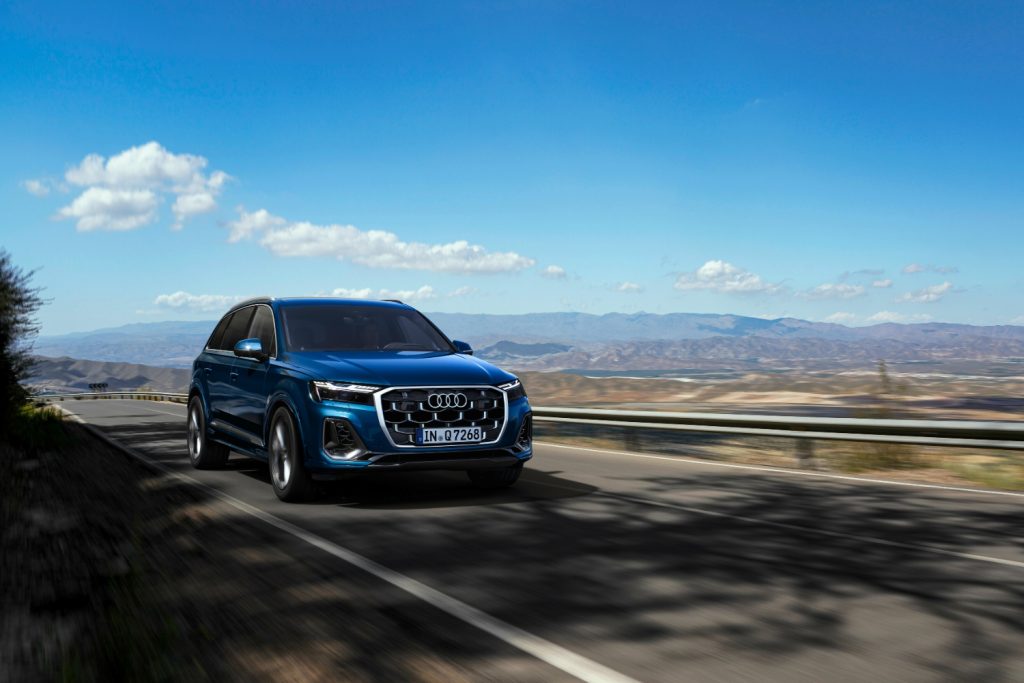
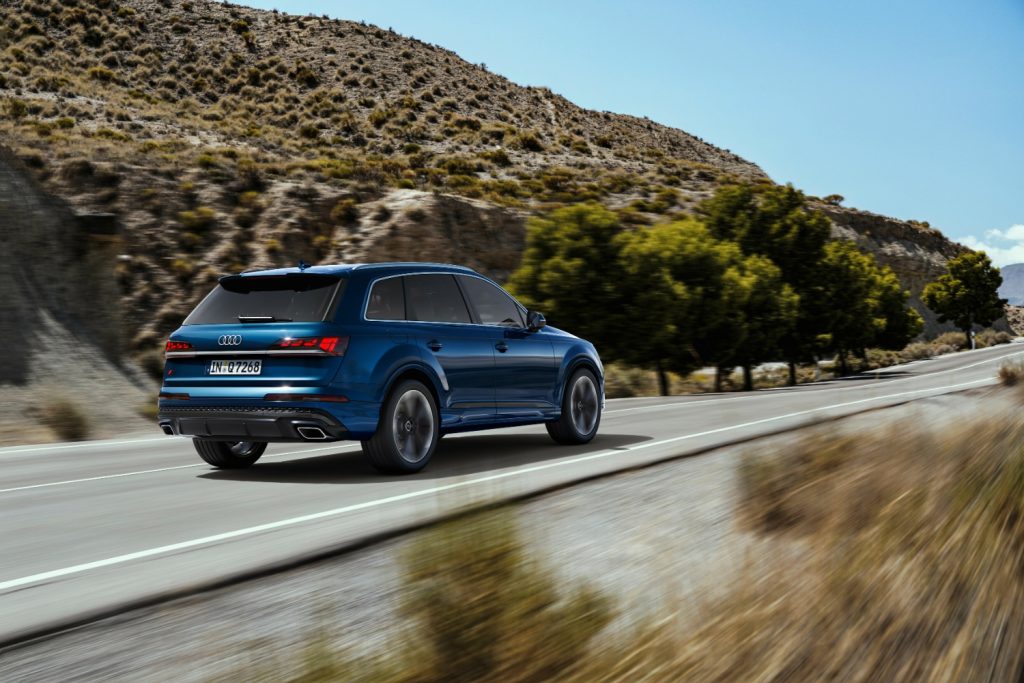

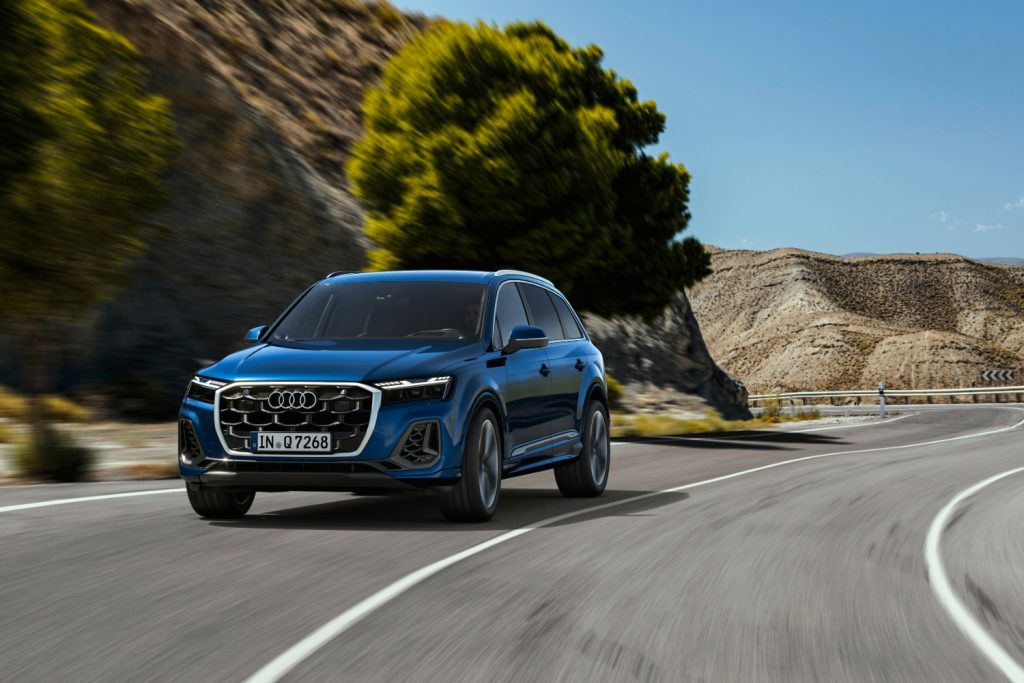
Despite using the same engines as its predecessor, the renewed Q7 now features a torque-vectoring differential as part of the Advanced Suspension Package.







